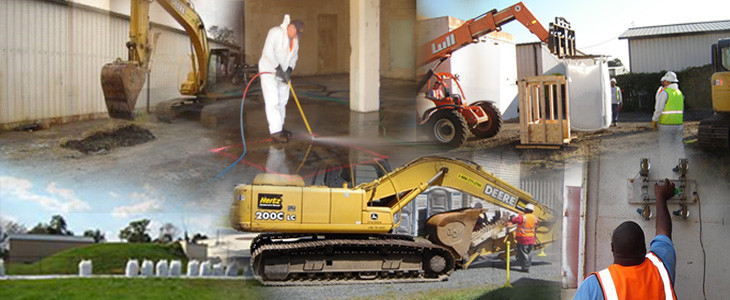Decommissioning at the Building 1103A Area included the dismantling and removal of equipment, structures, and slabs which were radiologically contaminated from historical site activities.
The Building 1103A Area is a former radioactive material processing and storage facility on Spesutie Island at the Aberdeen Proving Ground (APG). Historical site activities involving depleted uranium (DU) resulted in radiological contamination of the buildings and grounds. The Army Research Lab (ARL) intends reusing this site for other purposes and hence the decommissioning so that the area can be released from its Nuclear Regulatory Commission (NRC) nuclear materials license requirements.
The U.S. Army Sustainment Command contracted PIKA to perform these decommissioning activities for the buildings, vaults, and outside contaminated asphalt/soils areas located at the Building 1103A Area of APG, with C. With our on-staff Certified Health Physicist (CHP) and experienced Health Physics Technicians (HPTs), we provided the client with a cost-effective and expeditious process to achieve their goals for this site. Decommissioning activities included final status survey of the remaining structures and land areas.
Once the building structures were removed, several radiologically contaminated concrete slabs were decontaminated by using an ultra-high pressure water blast prep of the floors and walls of building. The ultimate goal of this effort was to remove the epoxy paint coating and the hidden radiological contamination underneath from the floor and the walls. The waste (along with epoxy paint) was containerized in a 55-gallon drum(s) for disposal. Contaminated asphalt and surface soil was excavated from the area as one of the final steps in the decommissioning process.
The Final Status Survey (FSS) included 29 survey units in the Building 1103A area. There were 5 land areas and 24 building areas. Release limits (DCGLs) for DU were taken from the US NRC approved decommissioning plan. The Buildings and Slabs FSS employed the following methodology:
- Beta Scans
- Alpha Static Measurements
- Alpha/beta Swipe Measurements
The Ground Areas FSS included:
- Gamma Scans
- Soil Sampling and analysis
We used a low-energy scintillation detector (FIDLER) to gamma-scan land areas. We continuously recorded locations using Global Positioning System (GPS) technology. The number and locations of static measurements were determined using the Visual Sample Plan (VSP) software. The 29 survey units were surveyed for residual DU activity and all were found to meet the requirements for unrestricted release from NRC licensing, based on the survey plan and NRC requirements. The final report was reviewed by the NRC and the site was approved for release from license requirements.
For more information, please contact us.

